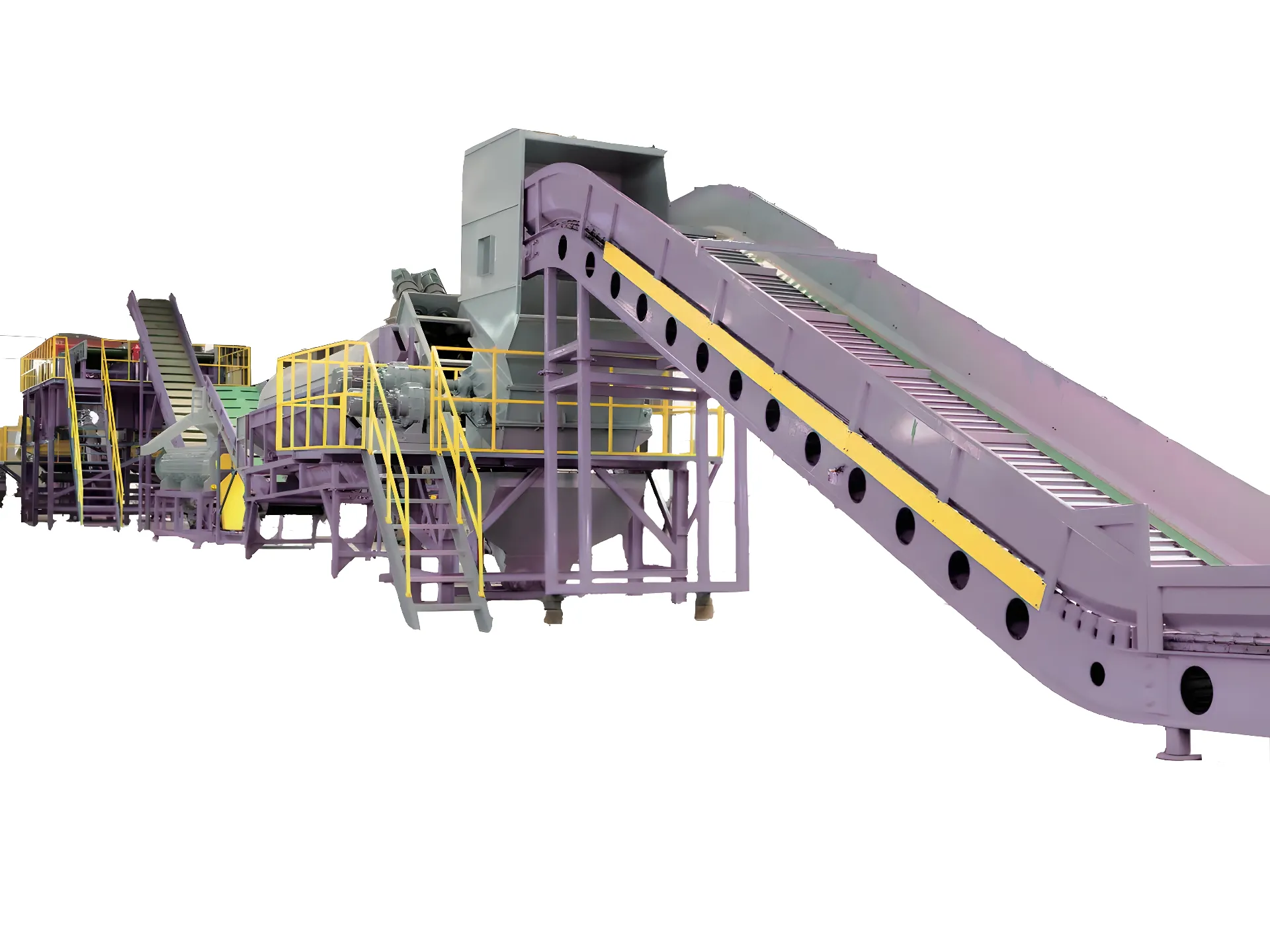The demand for efficient and reliable plastic recycling solutions has reached unprecedented levels. Our comprehensive PET bottle washing line provides a turnkey solution for businesses aiming to optimize their plastic bottle recycling operations. This fully automated system converts baled PET bottles into high-quality, contaminant-free PET flakes, which are ideal for manufacturing new PET products or producing polyester staple fiber.
Working Principle
Our PET bottle washing line consists of a series of interconnected plastic recycling machines, each integral to the recycling process.
The process begins with the debaler machine, which breaks down compacted bales of PET bottles into a free-flowing stream. These bottles then proceed to the trommel, a slow-rotating tunnel equipped with small holes that filter out small contaminants from the PET bottles.
Next, the wet plastic granulator or crusher cuts the bottles into small flakes. The air classifier then removes lighter materials such as paper and plastic labels. Following this, the sink/float separation tank segregates materials based on their buoyancy, with PET plastic sinking and plastic film and PP/PE plastic floating.
The hot washer system dissolves any remaining glues and residual beverages or foods, while the friction washer eliminates any leftover dirt and debris. The dewatering machine and thermal dryer then collaborate to remove any residual moisture from the flakes.
Finally, the clean, dry PET flakes are stored in the product silo. Additionally, we offer pelletizers/extruders for the production of plastic pellets, if required.
High-Quality PET Flakes
Our PET washing line produces high-quality PET flakes that adhere to stringent industry standards. The flakes boast a moisture content of less than 1-2%, a bulk density of less than 0.3G/CM³, and minimal levels of impurities, PVC, metal, and PE/PP content. The particle size is meticulously controlled to be less than 14-16mm, ensuring superior quality and consistency.
Main Technical Parameter
| Input Capacity | 500kg/h | 1000kg/h | 1500kg/h | 2000kg/h | 3000kg/h |
|---|---|---|---|---|---|
| Required Space | 42m×10m×6m | 50m×15m×6m | 55m×16m×6m | 60m×18m×6m | 100m×20m×6m |
| Operators | 3-5 people | 6-8 people | 7-9 people | 8-10 people | 10-12 people |
| Installation Power | 150kW | 250kW | 370kW | 450kW | 750kW |
| Water Circulation(T/H) | 2 | 3 | 3 | 4 | 5 |
Post-consumer PET bottles are undoubtedly one of the most important components of the recycling market. Recycled PET can be used in a wide variety of applications and can bring significant financial returns to recycling companies.

| Step | Description |
|---|---|
| De-baling | Separating the PET bottles from baled packages |
| Metal Removal | Separating metal materials using magnets or electromagnets |
| Label Removal | Removing labels from the PET bottles chemically or mechanically |
| Metal Removal | Separating residual metal materials using magnets or electromagnets |
| Bottle Pre-washing | Initial washing of the PET bottles before the washing process |
| Optical Bottle Sorting | Sorting PET bottles by type and color using optical sensors |
| Manual Sorting | Further sorting of PET bottles by hand (by color, type, material, etc.) |
| Crushing | Shredding the PET bottles into small pieces |
| Dust Removal | Removing dust from the shredded PET bottle pieces |
| Flotation Hot washing | Cleaning the PET flakes using hot water in a flotation tank |
| Friction Washing | Removing remaining contaminants from the PET flakes using brushes or other methods |
| Rinsing | Rinsing the cleaned PET flakes to remove any remaining cleaning agents |
| Flushing Washing | High-pressure water rinsing of the PET flakes |
| Drying | Drying the PET flakes using air or a spinning process |
| Dust Removal | Removing any remaining dust from the dried PET flakes |
| Optical Flakes Sorting | Sorting PET flakes by type and color using optical sensors |
| Blending | Blending different colors and types of PET flakes |
| Online Inspection | Inspecting the quality of the PET flakes on the production line |
| Packing | Packaging the PET flakes in bags or other containers |
PS:Equipment configuration and the process will be optimized according to raw materials.
Video
Warranty
All recycling machines come with a 1 year limited warranty.
INQUIRIES
To get the latest prices and lead times, send us a message using the form below.








[…] the world of PET bottle recycling, the debaler machine is an indispensable piece of equipment. The first step in any PET bottle […]